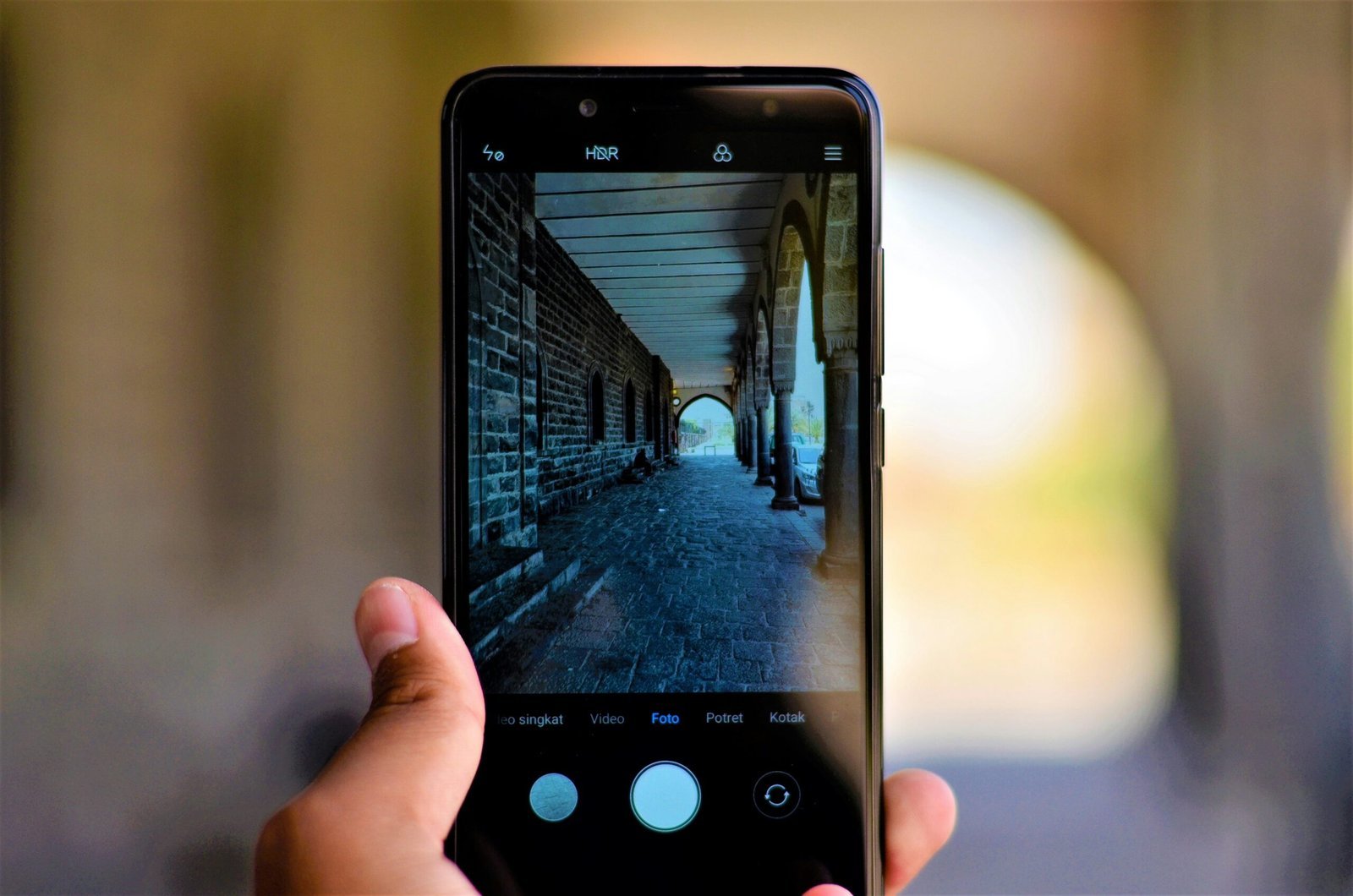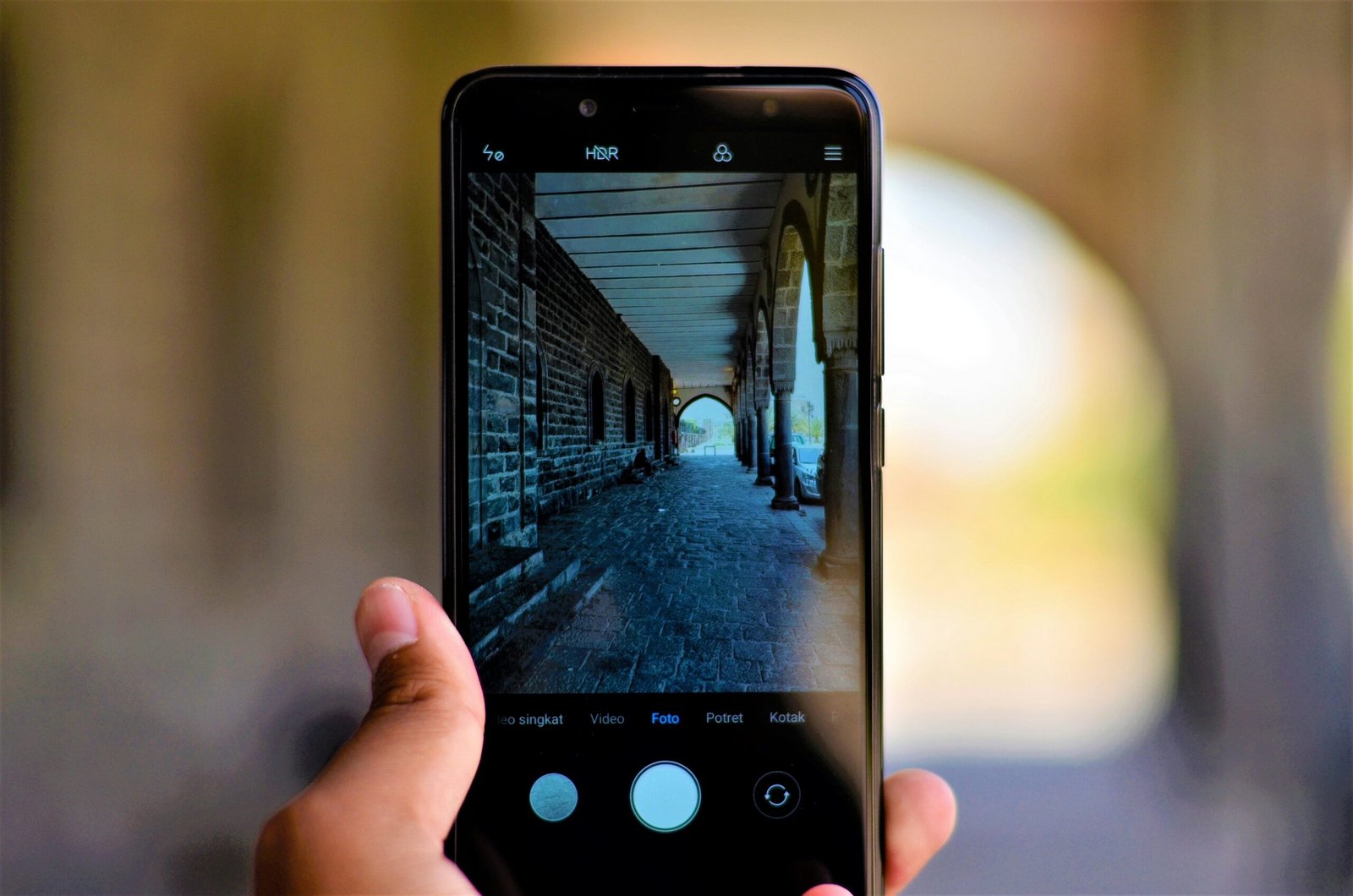
Introduction to the Technological Revolution
In recent decades, the world has witnessed an unprecedented surge in technological advancements, fundamentally altering the way we live, work, and interact. The rapid pace of innovation has transformed technology from a luxury to an integral part of our daily lives. From the advent of personal computers in the late 20th century to the pervasive influence of smartphones and the Internet today, technology has woven itself into the very fabric of society.
The evolution of technology is marked by significant milestones, each contributing to the excitement and potential of the current technological landscape. The transition from bulky, room-sized computers to portable, high-performance laptops and tablets exemplifies the leaps in hardware development. Similarly, the rise of the Internet has revolutionized communication, enabling instant connectivity across the globe and fostering a more interconnected world.
Moreover, the emergence of artificial intelligence (AI), machine learning, and the Internet of Things (IoT) has ushered in a new era of automation and smart devices. These technologies are not only enhancing efficiency and productivity in various industries but also making everyday tasks more convenient and engaging for individuals. For instance, smart home devices allow us to control our home environment with simple voice commands, while AI-powered personal assistants help manage our schedules and provide personalized recommendations.
The technological revolution is also characterized by the continuous development of new and exciting innovations. Virtual reality (VR) and augmented reality (AR) are reshaping entertainment and education, offering immersive experiences that were once the realm of science fiction. Meanwhile, advancements in biotechnology and renewable energy are addressing critical global challenges, paving the way for a more sustainable and healthier future.
As we stand on the cusp of even greater technological breakthroughs, the potential for enhancing our lives in diverse and meaningful ways is boundless. The journey through this hip and happening world of technology promises to be an exhilarating one, filled with opportunities for discovery, creativity, and progress.
Smart Homes: Bringing the Future to Your Living Room
The concept of smart homes is transforming the way we interact with our living spaces, blending cutting-edge technology with everyday convenience. At the forefront of this revolution are devices designed to enhance both comfort and efficiency, ultimately creating more intuitive and responsive environments.
One of the most notable advancements in smart home technology is the smart thermostat. These devices allow for precise control over home heating and cooling systems, learning homeowner preferences over time to optimize energy usage. By automatically adjusting temperatures based on occupancy patterns and weather conditions, smart thermostats not only provide comfort but also contribute to significant energy savings.
Another key component of smart home ecosystems is the integration of advanced security systems. Modern smart security solutions include features such as real-time video surveillance, motion detection, and remote access via mobile apps. These systems offer homeowners peace of mind by enabling them to monitor their properties from anywhere in the world, receive instant alerts, and even interact with visitors through smart doorbells equipped with cameras and intercoms.
Voice-activated assistants, such as Amazon’s Alexa, Google Assistant, and Apple’s Siri, represent another leap forward in smart home innovation. These virtual assistants can control a wide array of connected devices, from lighting and appliances to entertainment systems, all through simple voice commands. This hands-free interaction streamlines daily routines, making tasks like setting reminders, managing schedules, and even shopping online more seamless than ever before.
Beyond individual devices, the true potential of smart homes lies in their interconnected nature. By creating a cohesive network of smart devices, homeowners can enjoy a level of automation that adapts to their unique lifestyles. For instance, a morning routine can be programmed to gradually adjust lighting, play preferred music, and brew coffee—all synchronized to ensure a smooth start to the day.
In essence, smart homes are redefining modern living by making our spaces more responsive, efficient, and secure. As technology continues to evolve, the possibilities for enhancing our daily lives through smart home innovations are virtually limitless, bringing the future right into our living rooms.
Wearable technology has seamlessly integrated into our daily lives, blending fashion with functionality in a remarkable manner. Smartwatches and fitness trackers have become ubiquitous accessories, not just for tech enthusiasts but for individuals from all walks of life. These devices are designed to complement our lifestyles while offering a range of benefits that enhance both health and productivity.
One of the most prominent categories in wearable technology is smartwatches. Brands such as Apple, Samsung, and Garmin have set the bar high with their innovative designs and advanced features. The Apple Watch, for instance, offers a sleek design coupled with capabilities like heart rate monitoring, GPS tracking, and even ECG readings. Samsung’s Galaxy Watch series provides similar functionalities with the added advantage of a longer battery life. Garmin, known for its precision in fitness tracking, caters to athletes and fitness enthusiasts by offering detailed performance metrics and training plans.
Fitness trackers are another significant segment within wearable technology. Devices like the Fitbit Charge and Xiaomi Mi Band have gained popularity due to their affordability and comprehensive health tracking features. These gadgets monitor activities such as steps taken, calories burned, and sleep patterns, helping users maintain a healthier lifestyle. The integration of smartphone notifications and reminders further aids in staying productive and connected without the constant need to check one’s phone.
Wearable technology has also seen notable advancements in the field of health monitoring. Continuous glucose monitors (CGMs) like the Dexcom G6 have revolutionized diabetes management by providing real-time glucose readings without the need for constant finger pricks. Similarly, wearable ECG monitors, such as the AliveCor KardiaMobile, allow users to record medical-grade ECGs and detect atrial fibrillation from the comfort of their homes.
In essence, wearable technology is not just about making a fashion statement; it’s about enhancing our overall well-being and productivity. As these devices continue to evolve, they are set to offer even more sophisticated features, making our lives not only more interesting but also increasingly efficient and health-conscious.
The Impact of Artificial Intelligence and Machine Learning
Artificial intelligence (AI) and machine learning (ML) are two of the most transformative technologies of our time. AI refers to the simulation of human intelligence processes by machines, while ML is a subset of AI that enables systems to learn and improve from experience without being explicitly programmed. These technologies are now integral to a multitude of industries, driving innovation and efficiency.
In healthcare, AI and ML have revolutionized diagnostics and treatment plans. AI algorithms can analyze medical images with remarkable accuracy, detecting conditions such as tumors and fractures more quickly than traditional methods. Machine learning models are also employed to predict patient outcomes, personalize treatment plans, and even assist in drug discovery. For instance, IBM’s Watson Health uses AI to analyze vast amounts of medical data, providing insights that enhance clinical decision-making.
The finance sector has also seen significant advancements thanks to AI and ML. These technologies are used for fraud detection, risk management, and algorithmic trading. Machine learning models can analyze transaction patterns to identify suspicious activities, thereby reducing the risk of fraud. Additionally, AI-driven chatbots provide customer service, handling queries and transactions efficiently. Companies like JPMorgan Chase use AI to review legal documents, saving time and reducing errors.
Entertainment is another industry where AI and ML are making waves. Streaming services like Netflix and Spotify leverage machine learning algorithms to recommend content based on user preferences, enhancing the user experience. AI is also used in content creation, with algorithms capable of composing music, writing scripts, and even generating visual art. For example, OpenAI’s GPT-3 is an advanced language model that can create human-like text, offering new possibilities for storytelling and creative writing.
These real-world examples underscore the profound impact of AI and ML across various sectors. As these technologies continue to evolve, they promise to unlock even greater potential, making our lives more interesting and exciting in the hip and happening world of technology.
Virtual Reality and Augmented Reality: Blurring the Lines Between Real and Digital Worlds
Virtual Reality (VR) and Augmented Reality (AR) represent transformative technologies that are reshaping how we interact with our environment. VR immerses users in a completely virtual world through hardware such as headsets, allowing them to experience and interact with a simulated environment. On the other hand, AR overlays digital information onto the real world, enhancing a user’s perception of reality through devices like smartphones and smart glasses.
In the realm of gaming, VR and AR offer unparalleled immersive experiences. VR games like “Beat Saber” and “Half-Life: Alyx” transport players into fantastical worlds, making gameplay more engaging and interactive. AR games like “Pokémon Go” bring digital creatures into our physical world, turning everyday surroundings into an interactive game board. These immersive experiences are not just limited to entertainment; they also significantly boost user engagement and retention.
Beyond gaming, VR and AR are revolutionizing education and training. In educational settings, VR can simulate historical events or complex scientific processes, providing students with a more interactive and engaging learning experience. For instance, platforms like Google Expeditions allow students to take virtual field trips to far-off places. Similarly, AR applications such as “Anatomy 4D” enable students to explore the human body in intricate detail, enhancing their understanding of complex subjects.
In professional training, VR offers a safe and controlled environment for practice. For example, medical students can perform virtual surgeries to hone their skills without the risk of harming patients. AR, on the other hand, can provide real-time information to field workers, such as technicians or engineers, improving efficiency and accuracy in real-world tasks. Applications like “Microsoft HoloLens” have been pivotal in this aspect, offering solutions that blend real-world tasks with digital instructions.
The impact of VR and AR on user engagement is profound. By blurring the lines between the real and digital worlds, these technologies create experiences that are not only more engaging but also more memorable. As VR and AR continue to evolve, their applications across various sectors will undoubtedly expand, further enhancing how we interact with the world around us.
The Rise of the Internet of Things (IoT)
The Internet of Things (IoT) represents a transformative shift in how we interact with technology and our environment. By connecting various devices to the internet, IoT creates a vast network of interconnected systems. This integration allows for seamless communication and data exchange between devices, paving the way for numerous advancements across multiple sectors.
One of the most significant benefits of IoT is its role in developing smart cities. Through the deployment of sensors and connected devices, urban areas can optimize resource usage, improve public services, and enhance the overall quality of life for residents. For instance, smart traffic management systems analyze real-time data to ease congestion, while intelligent waste management systems ensure efficient collection and disposal. These innovations contribute to more sustainable and livable urban environments.
In healthcare, IoT has revolutionized patient care and medical operations. Wearable devices and remote monitoring systems enable continuous health tracking, allowing for timely interventions and personalized treatments. For example, smart insulin pumps and heart rate monitors provide critical data to healthcare providers, ensuring better management of chronic conditions. Additionally, IoT-based telemedicine platforms facilitate remote consultations, breaking down geographical barriers to healthcare access.
Industrial automation is another area where IoT demonstrates its potential. By integrating IoT devices into manufacturing processes, companies can achieve greater efficiency and productivity. Predictive maintenance systems, powered by IoT sensors, monitor equipment health and predict failures before they occur, minimizing downtime and reducing costs. Moreover, IoT-driven supply chain management enhances transparency and coordination, ensuring timely deliveries and optimized inventory levels.
Innovative IoT applications continue to emerge, making significant impacts. Smart home devices, such as voice-activated assistants and automated lighting systems, enhance convenience and energy efficiency. In agriculture, IoT solutions like soil moisture sensors and automated irrigation systems promote sustainable farming practices by optimizing water usage and improving crop yields.
Overall, the rise of the Internet of Things is reshaping various industries, offering unparalleled benefits and driving technological advancement. As IoT continues to evolve, its applications will undoubtedly expand, further enriching our lives and transforming the world around us.
The Evolution of Social Media: Connecting the World
In the realm of today’s technologically advanced society, the evolution of social media has been nothing short of transformative. Platforms such as Facebook, Instagram, and Twitter have revolutionized the way we communicate and share information, making global connectivity more seamless than ever before. These social media giants have not only altered our personal interactions but have also reshaped the landscape of cultural exchange on a worldwide scale.
Facebook, which started as a collegiate networking site, has grown into a multifaceted platform that enables users to connect with friends and family, join interest-based groups, and engage with content from around the globe. The platform’s algorithms facilitate the discovery of new content, breaking down geographical barriers and fostering a more interconnected world. Similarly, Instagram has transformed visual communication, enabling users to share moments and experiences through photos and videos. The platform’s emphasis on visual storytelling has created a global stage for cultural expression, allowing users to showcase their unique perspectives and artistic endeavors.
Twitter, with its real-time communication model, has become a powerful tool for news dissemination and public discourse. The platform’s character limit encourages concise and impactful messaging, making it an ideal medium for sharing breaking news, opinions, and cultural commentary. Twitter’s hashtag functionality has also played a pivotal role in organizing and amplifying social movements, bridging the gap between local issues and global awareness.
The impact of social media on global connectivity and cultural exchange cannot be overstated. These platforms have enabled unprecedented levels of interaction and information sharing, fostering a sense of global community. They have also provided a voice to marginalized groups, facilitating the spread of diverse cultural narratives. As social media continues to evolve, its role in connecting the world and shaping our collective experiences will undoubtedly grow, further enriching the tapestry of global communication.
Looking Ahead: The Future of Technology
The future of technology promises a landscape that is both transformative and exhilarating. As we look ahead, several emerging technologies stand out, each poised to redefine the boundaries of what is possible. Among these, quantum computing is one of the most anticipated advancements. Unlike traditional computing, which relies on bits, quantum computing uses quantum bits (qubits) that can exist in multiple states simultaneously. This allows for unprecedented processing power and speed, enabling solutions to complex problems in fields like cryptography, logistics, and drug discovery.
Advanced robotics is another area with immense potential. Robotics technology is evolving rapidly, with robots becoming more autonomous, intelligent, and capable of performing intricate tasks. From healthcare to manufacturing, advanced robotics can significantly improve efficiency, precision, and safety. For instance, surgical robots can perform minimally invasive operations with remarkable accuracy, while autonomous drones can assist in disaster relief by reaching areas that are otherwise inaccessible.
Biotechnology is also on the cusp of revolutionary breakthroughs. Innovations in this field are set to transform healthcare, agriculture, and environmental conservation. Gene editing technologies like CRISPR are enabling scientists to modify DNA with unprecedented precision, potentially eradicating genetic disorders and enhancing crop resilience. Furthermore, the development of personalized medicine, which tailors treatments to individual genetic profiles, promises to improve patient outcomes and reduce side effects.
As these technologies continue to evolve, their integration will likely lead to synergistic advancements. For example, the combination of quantum computing and biotechnology could accelerate drug development, while advanced robotics paired with AI could lead to entirely new industries and job opportunities. The future of technology is not just about incremental improvements but about creating new paradigms that enhance and excite our lives in ways we have yet to fully imagine.




